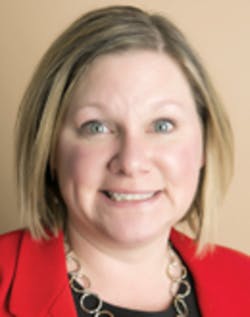This scenario is all too familiar: It’s nine o’clock at night and a physician is at home catching up on documentation after a full day of patient visits. A recent survey1 found that physicians were spending two hours of their personal time every night on documentation. Physician burnout is an acknowledged issue within the industry, and many healthcare organizations are developing plans to combat it. In addition to the toll on the physicians, there is an impact on patient care. The Joint Commission recently issued a report2 specifically citing clinician burnout as a contributing factor to adverse events.
Are electronic health records (EHRs) to blame? While they are a contributing factor, burnout rates among physicians using an EHR are higher (57.2%) than those not using an EHR (44.6%).1 However, this is a multifaceted issue. There is a dichotomy between what is needed to effectively treat patients vs. requirements for defensive documentation, clinical analytics quality reporting, and insurance payment reform. Many physicians feel they have been relegated to the rule of data entry clerks. Medicine itself also is constantly changing: new drugs, new tests, and new guidelines and protocols.
It’s no secret physicians are grappling with legacy EHRs, which have largely been designed to address Meaningful Use (MU) mandates. Today’s physicians need a post-MU EHR that supports their mobility, complex workflow, and personalization needs. Even though MU appears to be wrapping up, physicians and healthcare organizations continue to be challenged to follow a new set of rules. Complex CMS regulations like MACRA, 21st Century Cures, PAMA, and the impending future of the Affordable Care Act, are just more weight on an already heavy workload affecting thousands of physicians and how they treat their patients.
At the end of the day, physicians don’t want to be up all night documenting. They need an EHR that will help them to reclaim their productivity. So how can EHRs give time back to docs?
Offer personalization
Every specialty practices differently, as does every physician, even down to the patient level. It is critical that physicians are able to personalize their experience on an EHR. Flexibility in documentation and having the freedom to customize how data is viewed are simple offerings that can make a physician’s work day go smoother.
Allow for complex interrupted workflows
While documenting on Patient A, a physician will get the tap on the shoulder to place orders on Patient B and get a tap on the shoulder for advice on how to respond to Patient C’s concerns. The software must be nimble enough to allow for these disruptions and keep the physician’s place on each patient.
Deliver on mobility and usability needs
Physicians are not desktop workers, but are on the go. Their technology needs to do the same. Just like how their personal devices are smart and easy to use, their EHR should be too. A mobile design with intuitive navigation, personalized views, customizable tools, and tap-and-swipe capabilities can save physicians time and help them do more.
Be committed to advancing interoperability standards
Physicians should have easy access to patient data whenever they need it. A fully interoperable EHR provides seamless patient care—anywhere and everywhere throughout the continuum. With a clinically integrated network, physicians have all the information they need to avoid medical errors and redundant tests.
Accommodating each of the four areas gives more time back to the physician. In addition, it contributes to the Thomas Bodenheimer, M.D., and Christine Sinksy, M.D., proposal to address workforce burnout with the Quadruple Aim3 component of improving the clinician and patient experience and the goal of improving the work-life balance of healthcare providers, including clinicians and staff.
What if the familiar scenario of physicians typing away on a computer, only to have their work follow them home, was replaced with a physician documenting at the time of the patient’s visit, in a fraction of the time because they have easy access to the data they need and all from a tablet with a series of taps and swipes. In 2017, this is what healthcare organizations and providers should expect and demand in an EHR—let’s give time back to docs.
References




